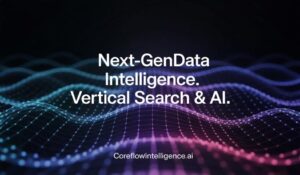
The surge in artificial intelligence (AI) adoption has sparked comparisons to the cloud boom of the past decade. However, while usage is growing rapidly, understanding remains shallow, according to new research. A report by Hostinger reveals that nearly 80% of companies now use or plan to use AI. Yet, a separate study by the Adecco Group indicates that only 10% of C-suite leaders believe their organizations are fully prepared for the disruption AI brings.
Among the estimated 359 million companies worldwide, approximately 280 million have integrated AI into at least one function. This widespread adoption highlights a significant shift in business operations, but it also underscores a critical gap in readiness and strategic alignment.
Bridging the AI Adoption Gap
As AI adoption accelerates, many companies are skipping the essential groundwork necessary for successful implementation. Leadership teams are failing to align on AI priorities, leaving strategies fractured and confused. According to Adecco, over half of CEOs admit their teams struggle to align on priorities, and only a third of businesses are investing in the data infrastructure needed to close these gaps.
A growing number of small businesses are turning to AI tools to handle tasks like writing emails, analyzing data, or generating content. Larger companies may build out full teams for implementation, but smaller firms are quietly transforming operations using lean, sometimes improvised, approaches. Despite this, readiness does not necessarily follow adoption, and there is a worrying gap in strategy. While 60% of leaders expect workers to update their skills, 34% of companies have no formal AI policy.
Strategic Misalignment and the Human Factor
A small group of “future-ready” companies is building more responsive strategies by supporting continuous learning and relying on enterprise-wide insight to shape their AI direction. Denis Machuel, CEO of Adecco, emphasizes the importance of a human-centric approach, stating,
“AI-driven transformation must be human-centric.”
Many companies rush into AI adoption without understanding what differentiates them, resulting in scattered or redundant projects. Stendera, an expert in enterprise architecture, explains,
“Without enterprise-wide insight, AI efforts become siloed and misaligned. Enterprise Architecture can help focus AI initiatives on what truly sets a company apart.”
By mapping their unique strengths and workflows, organizations can guide AI deployments that reinforce strategic priorities rather than dilute them.
The Path Forward: Introspection and Investment
AI depends not just on investment, but on introspection. It is not a magic fix, and if companies do not understand what they need from AI, they won’t know how to use it effectively. The result could be catastrophic, leading to wasted resources and missed opportunities.
Looking ahead, companies must focus on developing comprehensive AI strategies that align with their core objectives. This involves investing in data infrastructure, fostering a culture of continuous learning, and ensuring that AI initiatives are integrated across all levels of the organization.
The move represents a critical juncture in the evolution of business technology. As AI continues to evolve, companies that take a thoughtful, strategic approach will be best positioned to harness its full potential.






